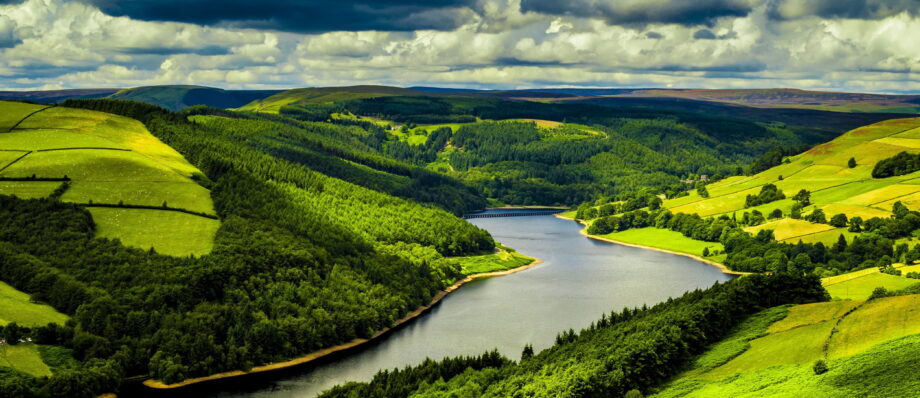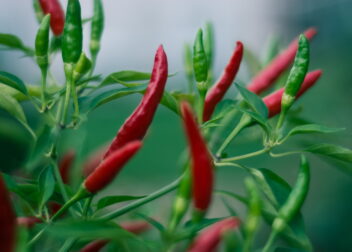Guntur: A Journey Through Its Rivers and Waterways
Guntur, a vibrant city in Andhra Pradesh, is not only known for its rich agricultural heritage and spicy cuisine but also for its significant rivers that play a crucial role in the region’s ecology, economy, and culture. The rivers in and around Guntur are vital for irrigation, drinking water, and supporting local biodiversity. In this blog, we will explore the famous rivers of Guntur, their importance, and the unique experiences they offer.
1. Krishna River: The Lifeline of Guntur
The Krishna River, one of the major rivers in India, flows through the Guntur district and is often referred to as the lifeline of the region. Originating in the Western Ghats of Maharashtra, the river travels through several states before emptying into the Bay of Bengal.
Importance of the Krishna River
-
Irrigation: The Krishna River is crucial for irrigation in Guntur, supporting the cultivation of various crops, including rice, tobacco, and pulses. The river’s water is diverted through canals to irrigate vast agricultural lands, ensuring food security for the region.
-
Hydroelectric Power: The river is also harnessed for hydroelectric power generation, contributing to the energy needs of the state.
-
Cultural Significance: The Krishna River holds immense cultural and religious significance for the people of Andhra Pradesh. It is often associated with various festivals and rituals, and many temples are located along its banks.
Scenic Beauty and Activities
The banks of the Krishna River offer picturesque views and opportunities for recreational activities. Visitors can enjoy boat rides, picnics, and nature walks along the river, making it a popular spot for both locals and tourists.
2. Gundlakamma River: A Hidden Gem
The Gundlakamma River is another important waterway in the Guntur district. It originates in the Nallamala Hills and flows through the region, eventually merging with the Krishna River.
Importance of the Gundlakamma River
-
Irrigation: Like the Krishna River, the Gundlakamma River is vital for irrigation, particularly in the surrounding villages. It supports the cultivation of various crops and helps sustain the livelihoods of local farmers.
-
Biodiversity: The river and its surrounding areas are home to diverse flora and fauna, making it an important ecological zone. The Gundlakamma River basin supports various species of fish, birds, and other wildlife, contributing to the region’s biodiversity.
Cultural Significance
The Gundlakamma River is also associated with local folklore and traditions. Many villages along its banks celebrate festivals that honor the river, reflecting the deep connection between the community and their natural resources.
3. Naguleru River: The Serene Waterway
The Naguleru River is a smaller river that flows through the Guntur district, adding to the region’s network of waterways. It is known for its serene environment and is often less crowded than the larger rivers.
Importance of the Naguleru River
-
Irrigation: The Naguleru River plays a role in supporting local agriculture, providing water for irrigation in nearby fields.
-
Recreation: The tranquil surroundings of the Naguleru River make it an ideal spot for relaxation and leisure activities. It is a great place for fishing, birdwatching, and enjoying the natural beauty of the area.
4. The Role of Rivers in Local Culture
The rivers of Guntur are not just sources of water; they are integral to the cultural fabric of the region. Festivals, rituals, and community gatherings often take place along the riverbanks, celebrating the connection between the people and their environment.
Festivals and Rituals
-
Bathing Festivals: Many locals participate in bathing festivals along the rivers, especially during auspicious occasions. These rituals are believed to purify the body and soul.
-
Cultural Events: Various cultural events and fairs are organized along the riverbanks, showcasing local traditions, music, and dance.
Conclusion
The rivers of Guntur, particularly the Krishna, Gundlakamma, and Naguleru, are vital to the region’s agriculture, ecology, and culture. They provide essential resources for irrigation, support local biodiversity, and serve as cultural landmarks that connect the community to their heritage. Whether you are a nature enthusiast, a cultural explorer, or someone looking to experience the serene beauty of the waterways, Guntur’s rivers offer a unique and enriching experience. As you explore this vibrant region, take a moment to appreciate the significance of its rivers and the life they sustain.

2. Gundlakamma River: A Hidden Gem
The Gundlakamma River is another important waterway in the Guntur district. It originates in the Nallamala Hills and flows through the region, eventually merging with the Krishna River.
Importance of the Gundlakamma River
-
Irrigation: Like the Krishna River, the Gundlakamma River is vital for irrigation, particularly in the surrounding villages. It supports the cultivation of various crops and helps sustain the livelihoods of local farmers.
-
Biodiversity: The river and its surrounding areas are home to diverse flora and fauna, making it an important ecological zone. The Gundlakamma River basin supports various species of fish, birds, and other wildlife, contributing to the region’s biodiversity.
Cultural Significance
The Gundlakamma River is also associated with local folklore and traditions. Many villages along its banks celebrate festivals that honor the river, reflecting the deep connection between the community and their natural resources.
3. Naguleru River: The Serene Waterway
The Naguleru River is a smaller river that flows through the Guntur district, adding to the region’s network of waterways. It is known for its serene environment and is often less crowded than the larger rivers.
Importance of the Naguleru River
-
Irrigation: The Naguleru River plays a role in supporting local agriculture, providing water for irrigation in nearby fields.
-
Recreation: The tranquil surroundings of the Naguleru River make it an ideal spot for relaxation and leisure activities. It is a great place for fishing, birdwatching, and enjoying the natural beauty of the area.
4. The Role of Rivers in Local Culture
The rivers of Guntur are not just sources of water; they are integral to the cultural fabric of the region. Festivals, rituals, and community gatherings often take place along the riverbanks, celebrating the connection between the people and their environment.
Festivals and Rituals
-
Bathing Festivals: Many locals participate in bathing festivals along the rivers, especially during auspicious occasions. These rituals are believed to purify the body and soul.
-
Cultural Events: Various cultural events and fairs are organized along the riverbanks, showcasing local traditions, music, and dance.
Conclusion
The rivers of Guntur, particularly the Krishna, Gundlakamma, and Naguleru, are vital to the region’s agriculture, ecology, and culture. They provide essential resources for irrigation, support local biodiversity, and serve as cultural landmarks that connect the community to their heritage. Whether you are a nature enthusiast, a cultural explorer, or someone looking to experience the serene beauty of the waterways, Guntur’s rivers offer a unique and enriching experience. As you explore this vibrant region, take a moment to appreciate the significance of its rivers and the life they sustain.



